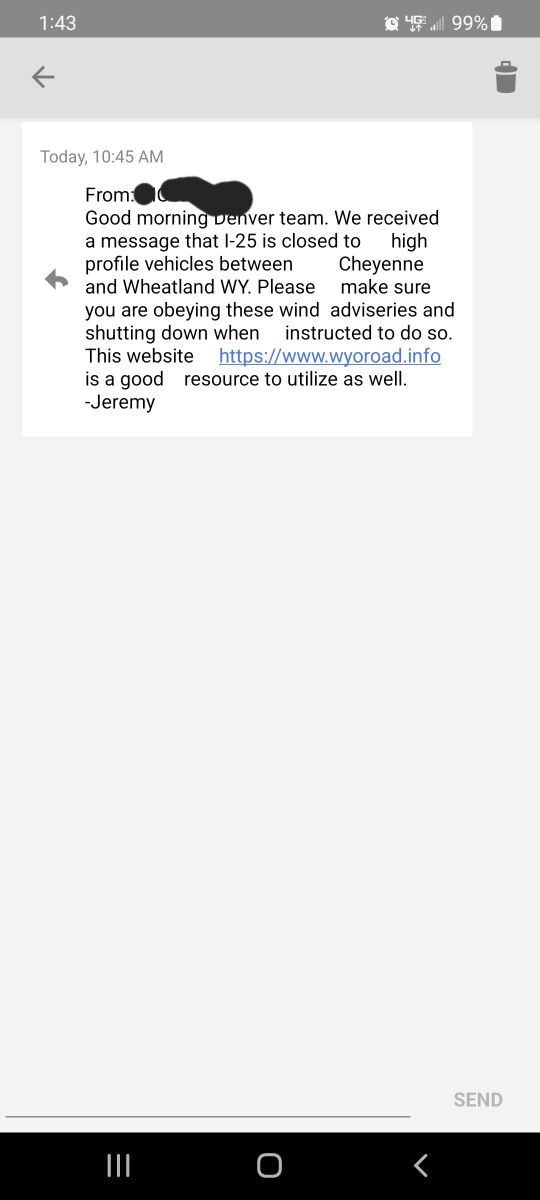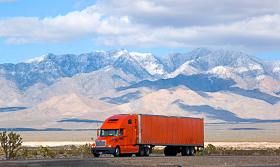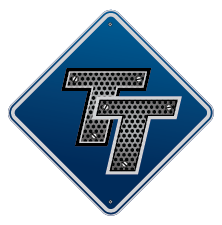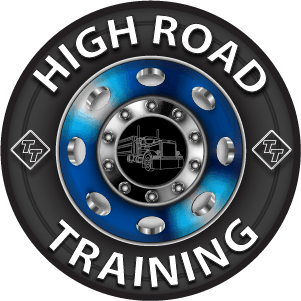What Is Your Limit For Wind?
Topic 32572 | Page 3
I thought that goes without saying. That's sort of like don't drive around the "road closed" barricade.
I remember when you said
Revisionist history, Banks. You got a bit upset when you asked if you have to spell it out and I told you that, yes, you have to spell it out. This is a public forum for drivers who are extremely green and those who are not even drivers yet.
HOS:
Hours Of Service
HOS refers to the logbook hours of service regulations.There are drivers who will ignore it.

Before I started out, wind advisory was such that I should have just stayed at the truck stop in Gary and waited it out. I made the decision to drive and monitor how bad things were as I drove. I had it in my mind that if I feel unable to control the vehicle, keeping it in my lane and upright, then I would park, notifying dispatch that weather prevented me being able to make the run.
Pulling over and parking is not something I can really do in a day cab. I don't want to be one of those guys who gets stuck in no man's land, and has to spend the night trying to sleep in one.
I appreciate everyone's replies
Day Cab:
A tractor which does not have a sleeper berth attached to it. Normally used for local routes where drivers go home every night.
HOS:
Hours Of Service
HOS refers to the logbook hours of service regulations.Also can't just stop anywhere with doubles because you can't back out.
Doubles:
Refers to pulling two trailers at the same time, otherwise known as "pups" or "pup trailers" because they're only about 28 feet long. However there are some states that allow doubles that are each 48 feet in length.
I’ll put another vote in for the windy app…love how it shows wind direction and speed for both gusts and steady winds. I really like the two charts that were shared on here and I think they’re a great reference. My rule of thumb no matter what is always, if I’m having a hard time keeping it in my lane or otherwise controlling the truck it’s time to either slow down or get off the road completely. It doesn’t matter to me if I can *probably* control it just fine for the next 20 miles. Probably isn’t good enough…all it takes is one good gust to knock you over or push you into the vehicle next to you. Not worth it.
I’ll also note, not to be incredibly obvious, but if you don’t want to deal with wind drive a tanker. I can’t even feel the wind until it’s gusting into the 50s or so most of the time, even when I’m empty. Flatbed was pretty great too unless you had a light high profile load like panel insulation. Steel was the best.

Before I started out, wind advisory was such that I should have just stayed at the truck stop in Gary and waited it out. I made the decision to drive and monitor how bad things were as I drove. I had it in my mind that if I feel unable to control the vehicle, keeping it in my lane and upright, then I would park, notifying dispatch that weather prevented me being able to make the run.
Pulling over and parking is not something I can really do in a day cab. I don't want to be one of those guys who gets stuck in no man's land, and has to spend the night trying to sleep in one.
I appreciate everyone's replies
I am bumping this because this is a rather important detail that I took for granted as an OTR driver. It really does put things in a whole different perspective.
Also can't just stop anywhere with doubles because you can't back out.
This is a relevant piece of information on which I have no experience.
Great feedback there.
OTR:
Over The Road
OTR driving normally means you'll be hauling freight to various customers throughout your company's hauling region. It often entails being gone from home for two to three weeks at a time.
Day Cab:
A tractor which does not have a sleeper berth attached to it. Normally used for local routes where drivers go home every night.
Doubles:
Refers to pulling two trailers at the same time, otherwise known as "pups" or "pup trailers" because they're only about 28 feet long. However there are some states that allow doubles that are each 48 feet in length.
HOS:
Hours Of Service
HOS refers to the logbook hours of service regulations.New Reply:
New! Check out our help videos for a better understanding of our forum features

















Preview:








 TT On Facebook
TT On Facebook
Ryan wrote:
I disagree. It's relevant.